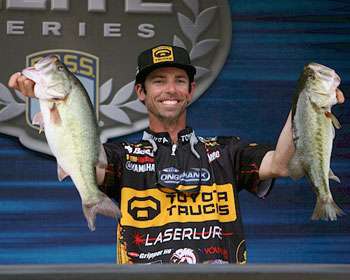
Every bass angler has heard the jargon associated with retrieval speed. Often it's the familiar, "I had to really burn the bait in order to get a bite," or it could be, "I had to literally deadstick the bait in order to get a strike."
Either way, Elite Series pro Michael Iaconelli admits that determining the appropriate retrieval speed can, for many anglers, be a very difficult challenge. However, he points out that, at times, retrieval speed is even more important than lure color.
"Speed is the trigger that makes bass bite," he explains. "Besides the bait itself, or the action of the bait, the speed that you're retrieving it can be the difference between getting a fish to react or not."
Iaconelli emphasizes that there are several key elements to refining retrieval speed. "One is the activity level of the bass," he reveals. "The colder the water, the slower the metabolism of the fish, meaning that you'll have to retrieve your bait slower. On the other hand, as the water warms, the fish will get more juiced up. So in warmer water, a faster retrieve is what you're looking for."
As important as water temperature and the mood of the fish are, Iaconelli points out that those aren't the only factors to consider. "The other thing to think about is the type of lure that you're fishing and where you're fishing it," he says.
During the 2009 Elite Series stop on Lake Guntersville, where Iaconelli finished fourth, retrieval speed was critical to his success. "I determined that in order to get the bass to react to my crankbait, I really had to be burning it in order to get it to deflect off the rocks and shellbeds that I was fishing," he explains. "The deflection after really burning the bait was the only thing that would cause a reaction strike."
With water temperature and the mood of the fish determined, Iaconelli points out that the type of lure you're fishing should also determine the rate of retrieve. "For instance, if you compare a spinnerbait, crankbait and lipless crankbait, the speed that you retrieve it will determine how each individual bait moves and how it reacts," he explains.
"Big Colorado blade spinnerbaits are more suited to slow rolling, while a 3/4-ounce double willowleaf spinnerbait is better suited for burning. The majority of the time, I'm trying to mimic the type of bait in the area."
Iaconelli concedes that there are a lot of elements associated with determining the appropriate rate of retrieval; however, he's adamant that if an angler is tuned in to the given clues, adjusting retrieval speed becomes second nature.
"It's hard because you get so involved when you're fishing that when you catch one you might not be paying attention to exactly how you were moving the bait to get a bite," he says. "You always need to remember what you were doing because nothing is an accident out here."




